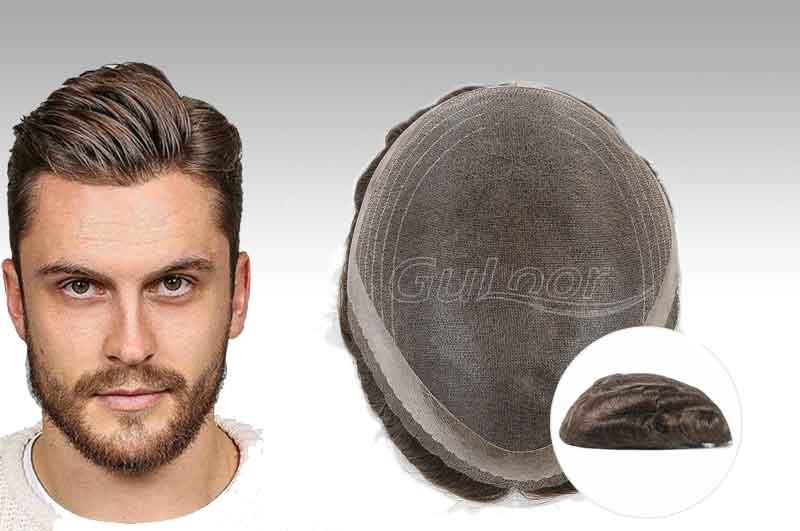A hair system (also known as non-surgical hair replacement, hair bonding, or hair integration process) by any other name is a wig, toupee, hairpiece, appliance, weave or, to use the vernacular, a “rug”. A source of great amusement to the fully haired, and the butt of a million bad jokes, the male wearer of a wig often live in a constant state of low-level paranoia and anxiety about his public discovery and subsequent humiliation. For some men and women, however, a hair system is a viable alternative to confronting the world in a state of balding.
Women seem to have been dealt a better hand than men when it comes to wigs. Society is more accepting of females altering their appearance in general: makeup, cosmetic surgeries, Botox, hair coloring, and the use of wigs. Indeed, there is a certain glamour associated with singers and actresses changing their hair to reflect a changing personality. Be that as it may, it has been a slow process for our current culture to accept “hair systems” as an option for balding men.
Now, however, this method has permeated our common lexicon (“I’m not only the Hair Club president, but I’m also a client!”). So let us discuss the wigmaker’s art, the types of systems, and the strengths and drawbacks of “borrowed hair”.
The materials used are of two main types: real hair and synthetic hair. There are currently no synthetics that rival real human hair; it simply lacks the natural texture, feel, and look of real hair. Of the sources of human hair, most are Asian, but European hair is more highly prized. Asian hair tends to be more coarse, and, when dyed to match the wearer’s shade, tends to look even more so. Also, unless it is used in a full wig, there may be more difficulty matching the person’s existing hair.
Many wigs and hairpieces are mass-produced, and these tend to be of lower quality than hand-made pieces. A few wigs are still custom made by fine artisans, with multiple fittings for the client, much like a fine tailored suit of clothes. Obviously, with such a range of quality, there is a corresponding price range, and hairpieces can be purchased costing from a few hundred dollars to five thousand or more, depending on hair type and construction. Maintenance is also an issue, and most clients choose to purchase at least two wigs so that one can always be worn when one is returned to the maker for maintenance.
All wig construction begins with a foundation of fabric or synthetic material. Many are sewn into fine mesh-like or “lace” foundations. Others are made using polymer bases that are promoted as “like a second skin”. The quality here also varies, as it does according to the skill with which the weaving is done. A finely crafted piece will honor the normal directionality, that is, the angles at which hair normally emerges from the scalp; this is of great importance in hair transplantation, and will be covered in detail later.
Regardless of the type of foundation used, all hairpieces, with the exception of full wigs, must be attached to the head. This is accomplished in a variety of ways, including clips, tapes, and bonding agents. These all have their advantages and disadvantages, and the choice has much to do with the size and shape of the piece and the personal preference of the wearer.
Clips are the easiest for getting the piece off and on; the downside is they can cause traction alopecia from the constant pulling force on the existing hair they are clipped to. Adhesive tapes are easy, but leave sticky residue on the hairpiece that requires cleaning and may prematurely age the appliance. There are also systems that are bonded to the scalp (temporarily) using adhesives, usually applied to a polymer (type of plastic) foundation. Sometimes these systems are marketed as “non-surgical hair implantation” because the plastic has hairs embedded into it.
Hair weaves are another method, by which the foundation fabric of a hairpiece is woven to the client’s existing hair. This affords the wearer good stability; however, as is the case with the “bonded” systems, they become loose as the underlying hair that remains grows out. Then, the client must return to the office for maintenance. This re-tightening or re-bonding must be done about every month, usually for a fee. Incidentally, many hair restoration surgeons feel that prolonged wearing of wigs and systems may accelerate the process of hair loss, probably through a variety of mechanisms.
Many men chose to use a hairpiece rather than undergoing surgical hair transplantation because of the latter’s cost. However, when we calculate a lifetime of periodic purchases of hairpieces (they do wear out!), the need to have two or more pieces available, the periodic maintenance, and, for many systems, monthly maintenance and/or re-tightening charges that may range from $100 to over $500, the cost obviously adds up. Hair transplantation, on the other hand, provides a permanent-growth of natural hair from the patient’s own head, and this may require only one procedure for a lifetime. Some men have such advanced baldness and such limited “donor” hair, that a hairpiece is a good option. Only a consultation with a physician specializing in hair restoration can help the balding patient make a truly educated decision.








